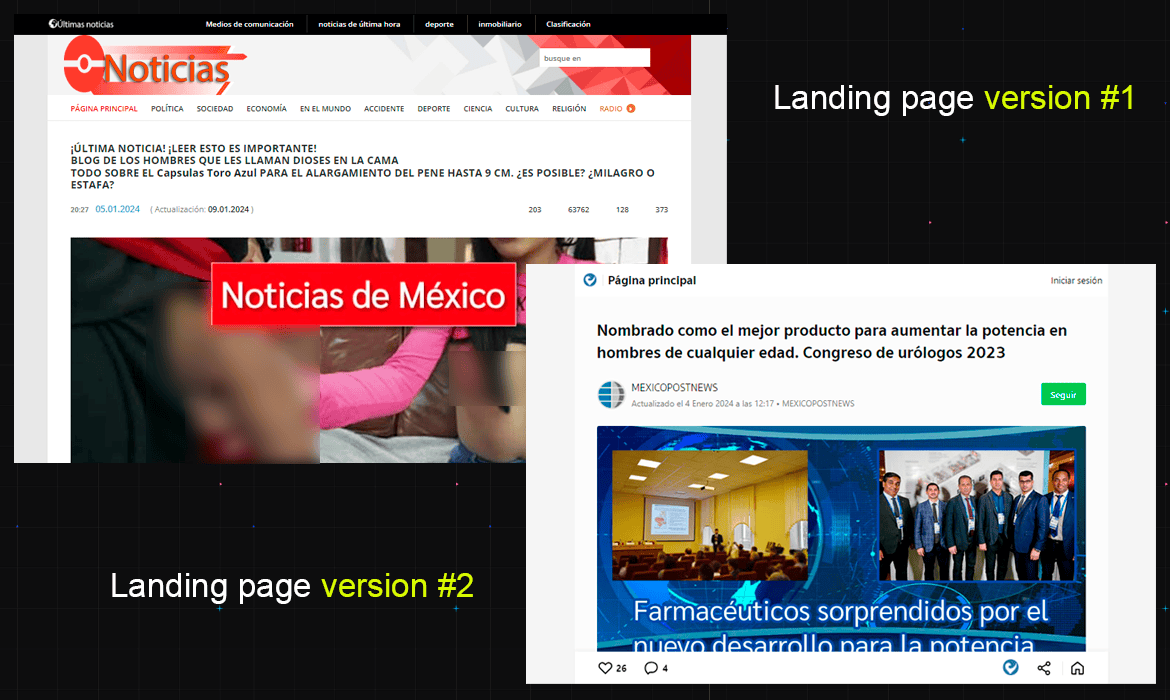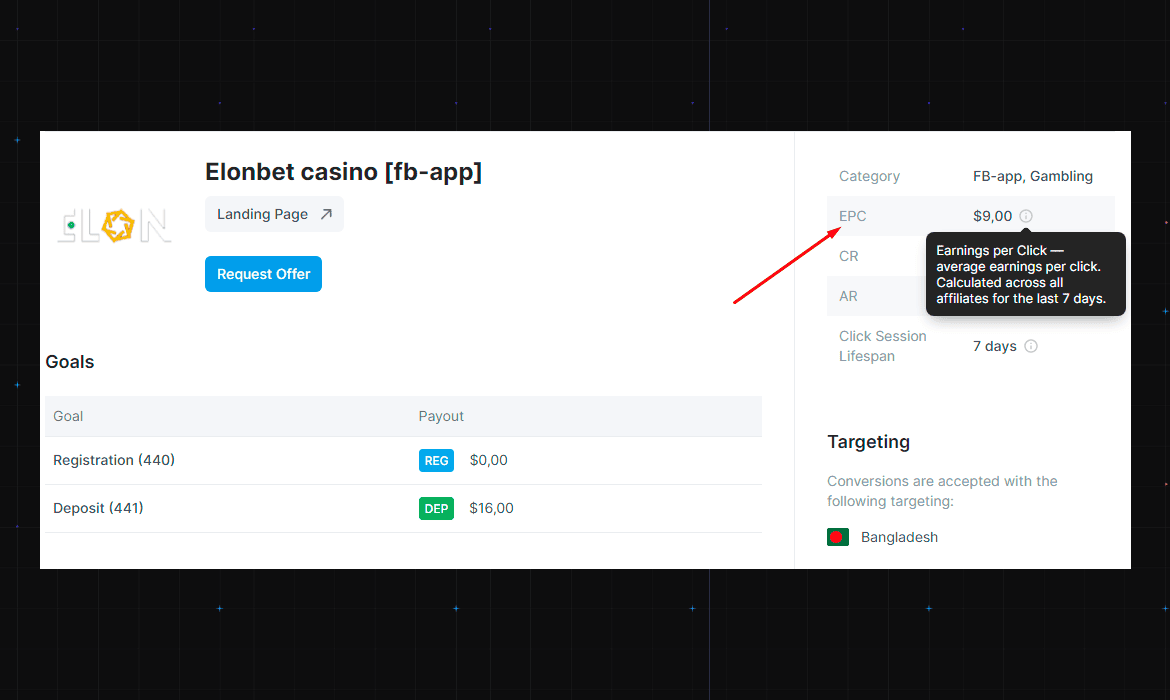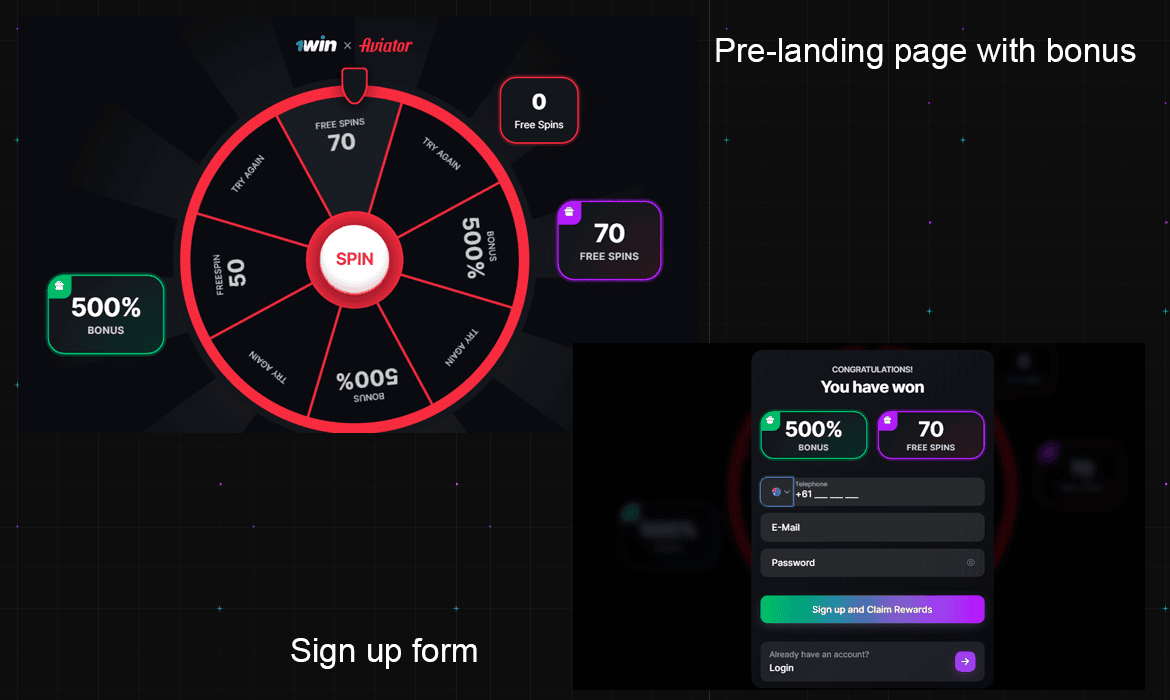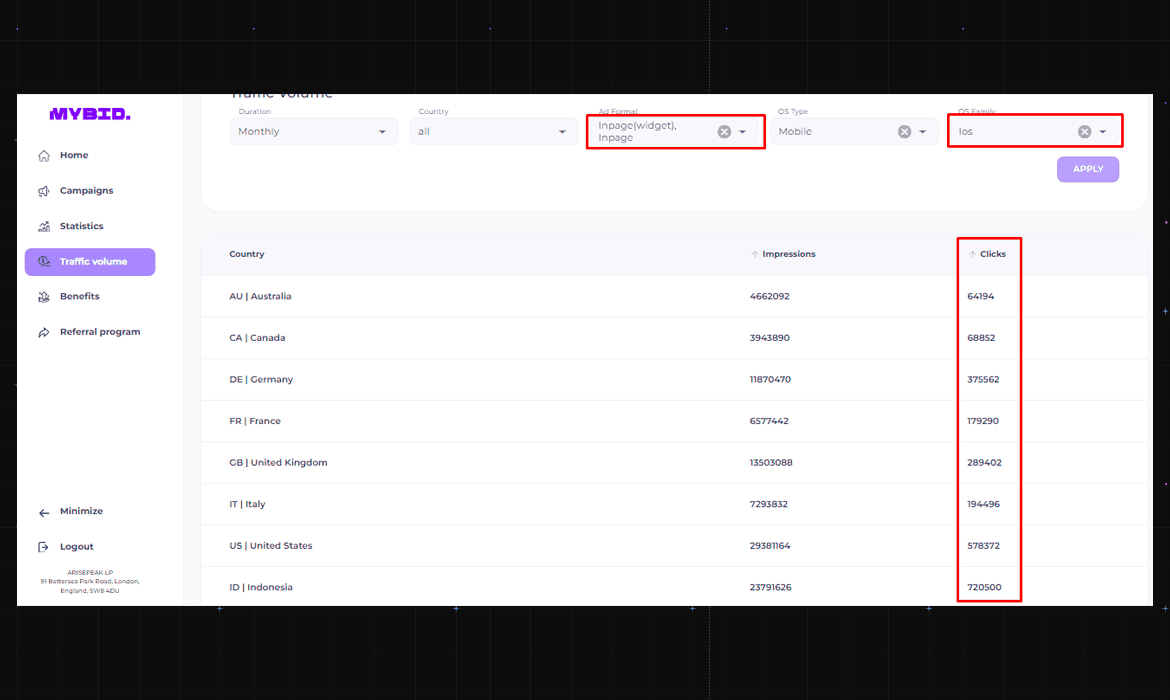
In 2024, it is rare to find internet marketers or business owners who don't collect and analyze some important metrics related to their advertising campaigns. These metrics provide valuable information about how effective their strategies are in promoting their offers. In affiliate marketing, there are several key metrics that marketers pay attention to, such as revenue, clicks, users, leads, and return on investment. These metrics are calculated as either percentages or numerical values, depending on their specific characteristics.
However, it's important to note that evaluating the success of an advertising campaign solely based on these numbers may not always provide a complete picture. Experienced affiliate marketers and media buyers understand this and focus on a range of key indicators that offer more detailed insights into each step of their traffic management process. In this article, we'll use push notifications as an example to analyze the main metrics that are relevant in affiliate marketing.

In the following sections, we will discuss the key metrics in affiliate marketing, specifically focusing on push traffic as an example. We will not only explain the significance of each metric but also provide formulas for calculating them. Additionally, we will explore how these metrics can impact the overall performance of an advertising campaign.
Ad сlick-through rate (CTR) is a metric that measures the percentage of users who click on an advertisement. It is calculated by dividing the number of clicks by the number of impressions and multiplying the result by 100%.

The calculation formula is as follows:
Ad click-through rate = (clicks ÷ impressions) * 100%
The Ad CTR helps us understand how appealing and effective an ad or creative is in getting people to click on it. If the Ad CTR is high, it means that the ad is resonating well with the target audience.

In most paid advertising platforms, the Ad CTR directly impacts the cost of each click and, ultimately, the conversion rate. However, when working with push traffic, affiliates have the potential to achieve a high Ad CTR and get conversions at a lower cost, even if they have a limited budget. To determine which push notification creative will generate good click-through rates and more conversions before launching an advertising campaign, it is recommended to work with a network that offers fully-managed services. This means that every affiliate is assigned with a personal manager who will not only set up and optimize the campaign for the affiliate, but also provide guidance on the best strategies to use based on the target location and vertical. MyBid is an example of an advertising network that follows this approach.

The conversion rate (CR) is a metric that tells us the percentage of users who complete a desired action, such as making a purchase or filling out a form, after visiting a landing page or website.
Formula:
Conversion Rate = (leads ÷ hits to the offer page) * 100%
This metric provides insights into how effective the final stage of the advertising process is. By looking at the conversion rate, an affiliate or media buyer can assess the attractiveness and user-friendliness of the landing page, as well as the popularity of the selected offer.

To determine which landing page has the highest conversion rate, it is important to conduct A/B tests. By allocating a portion of the budget to test and identify the best version of the landing page, an affiliate can expect a significantly higher number of conversions.
ROI, or return on investment, is a metric that helps assess the profitability of an advertising campaign or investment. It compares the return on investment to the initial cost of the investment. The formula to calculate ROI is:
ROI = (return on investment - volume of investment) ÷ volume of investment * 100%
If the ROI is negative, it means that the investment is resulting in a loss. A ROI of 0% indicates that the investment has been recovered but without any profit. A ROI of 100% means that the investment has doubled. The ROI can exceed 100%, such as 101% or even 10,000%.

In the case of using push notifications as an example, which are often considered a cost-effective advertising approach, achieving a high ROI is more likely when targeting audiences in Tier-1 geos like the USA, Australia, Canada, UK, and New Zealand. Users in these geos tend to have higher purchasing power and are more inclined to make online purchases.
However, it's important to carefully choose a reliable advertising network that offers traffic from high-quality websites with minimal bot traffic. For instance, the fully-managed advertising network MyBid ensures that more than 95% of the sites in the network undergo regular checks to maintain traffic quality. Moreover, we directly own these sites. Additionally, the minimum cost per click (CPC) in the network is as low as $0.000169.

CPC, which stands for Cost Per Click, is a metric that tells us how much it costs for each click on an advertisement. It's important to note that CPC should not be confused with the payment model that shares the same name. In affiliate marketing, CPC is a useful metric for marketers to estimate the potential effectiveness of their investments at the beginning of the marketing process. To calculate CPC, you simply divide the total amount of money invested by the number of clicks the ad receives.
CPC = amount of investment ÷ number of clicks
CPA, or Cost Per Action, is a metric that represents the cost of acquiring each desired action or lead. It provides insight into the cost and effectiveness of the marketing funnel as a whole, rather than just focusing on individual components such as ads, pre-landing pages, landing pages, or applications. To calculate CPA, you divide the total amount of money invested by the number of desired actions or leads received.
CPA = Total Investment ÷ Number of Desired Actions
EPC, or Earnings Per Click, is a metric that shows how much money is earned on average for each click on an advertisement. It measures the relationship between the total revenue generated by an affiliate and the number of clicks received in their advertising campaign.
The formula for calculating EPC is as follows:
EPC = revenue ÷ clicks
Many CPA networks and affiliate programs provide EPC information as a key indicator in their offer cards. This helps affiliates understand the average income they can expect to earn from each click.

It's important to keep in mind that different affiliate marketers can simultaneously promote the same offer using various traffic sources and approaches. Affiliate networks provide an average EPC based on overall statistics.
By monitoring the EPC, which can be tracked using a tracker tool, affiliates can assess the profitability of each click. This information allows them to make adjustments to their strategies or develop new ones based on the insights gained.
Landing Page CTR, which stands for Landing Page Click-Through Rate, is a metric that tells us how effective and appealing a landing page is to the audience of an advertising campaign. It specifically measures the rate at which users click from a pre-landing page to the actual landing page.

The metric can be calculated using the following formula:
Landing Page CTR = number of landing visits ÷ number of pre-rendering visits * 100%
For example, if there were 100 visits to the pre-landing page and only 7 of those resulted in visits to the landing page, the Landing Page CTR would be 7% (7 visits to the landing page divided by 100 visits to the pre-landing page, multiplied by 100).
This metric is important for affiliate marketers, especially in niches like nutra, crypto, and insurance, where the target audience requires more engagement and careful decision-making.
By monitoring the Landing Page CTR, marketers can assess how well their pre-landing pages are capturing the interest of users and driving them to the landing page. This information can help in optimizing campaigns and improving the conversion rates from the pre-landing page to the landing page.
There are also niche metrics that are specific only to gambling, crypto, and betting niches. In these niches, the main goal for affiliates is to encourage users to make their first-time deposit (FTD) using the CPA (Cost Per Action) model. Affiliates often use traditional applications or Progressive Web Applications (PWA) as landing pages, which need to be installed on the user's device. Now, let's dive into three important metrics that are commonly used in these industries.
Click2Reg (Click to Registration) is a metric that measures the ratio of users who registered on an offer's website using the affiliate link to the total number of clicks on the ad.

To calculate Click2Reg, you divide the number of registrations by the number of clicks on the ad and multiply by 100%:
Click2Reg = (Number of Registrations / Number of Clicks on the Ad) * 100%
For affiliates, this metric indicates how well the traffic from advertising aligns with their expectations and how appealing the offer is to the target audience.
Reg2Dep (Registration to Deposit) is a metric that measures the percentage of users who not only registered on the advertiser's website but also made their first deposit. It helps us understand the conversion rate from registrations to actual deposits. To calculate Reg2Dep, we divide the number of first deposits by the number of registrations and multiply by 100%.
Reg2Dep = (Number of First Deposits / Number of Registrations) * 100%
If there are many registrations but few deposits, it may indicate issues with the user experience on the offer's website. It's also important to review the creatives used in the campaign to ensure they accurately represent the information on the landing page. Misleading promises, such as a non-existent bonus of 300 Free Spins, can distract users from making deposits.
Inst2Reg (Install to Registration) is a metric that shows the percentage of users who registered after downloading a mobile application.
To calculate Inst2Reg, we divide the number of registrations by the number of mobile app downloads and multiply by 100%.
Inst2Reg = (Number of Registrations / Number of Mobile App Downloads) * 100%
Due to recent changes in Google Play policy, as of 2024, many affiliates were forced to stop using Android applications in marketing funnels. Some have switched to PWA, but those who drive traffic to iOS users get greater profits.

Since the traditional push notification format doesn't reach Apple device users, the InPage Push format has become a popular alternative. It can generate significant traffic volumes, with ad networks such as MyBid handling hundreds of thousands of clicks and millions of impressions.

Affiliate marketing can be overwhelming for newcomers due to the many variables involved. However, it's important not to ignore these factors, especially as competition grows. By learning how to analyze metrics effectively, you can understand how well your efforts are performing and make necessary adjustments based on real data.
While media buyers may sometimes need to find complex solutions to assess their work's productivity, it's recommended to seek support from experienced managers in fully-managed advertising networks. They can provide valuable guidance and assistance.
In this article, we've discussed only a small portion of the available performance indicators. In reality, there are many more metrics, but not every affiliate marketer needs to use all of them. The relevance of using specific metrics depends on factors like the offer's niche, payment model, and desired actions. Understanding the main indicators and knowing how to calculate them is sufficient. Metrics should be seen as tools to help media buyers, rather than the ultimate goal.